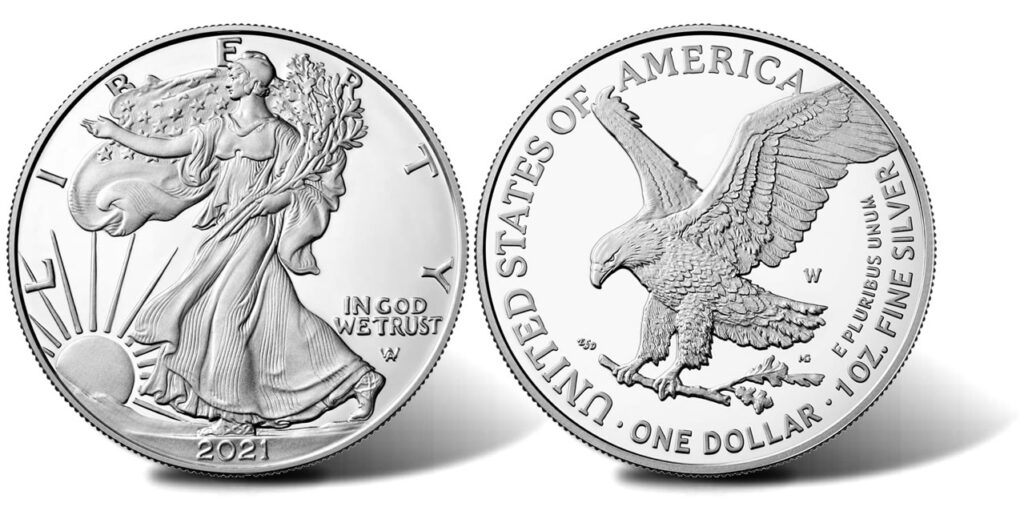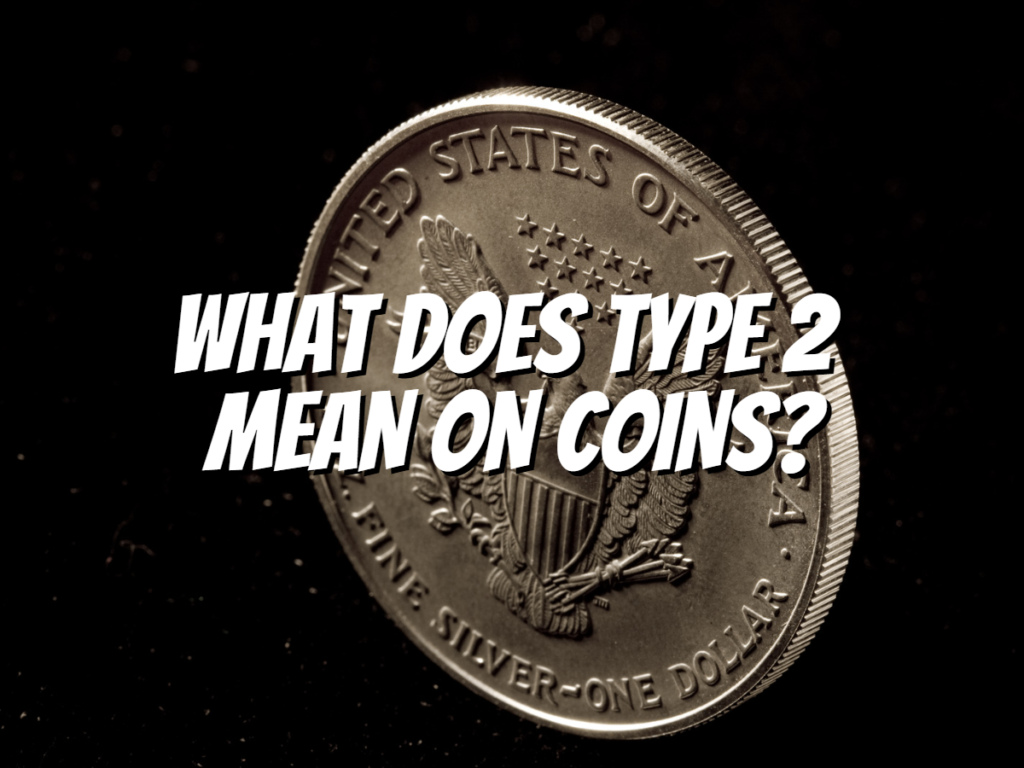In my early years of coin collecting, I stumbled upon the term “type 2” on coins. But what does type 2 mean on coins?
Since encountering it, I’ve made my research about these types of coins, and here’s what you need to know:
What Does Type 2 Mean on Coins?

According to my research, Type 2 is a term used for a second version of the same coin.
Type 1 and Type 2 are two different versions of the same coin type, so it’s no surprise that most people need to learn what types mean on coins.
The word “type” can be confusing because it has several meanings in numismatics.
For example, if I’m talking about a particular design for an American coin, I’d say, “this is a Mercury dime with a type 1 reverse.”
But, on the other hand, if I’m talking about two different versions of the same design (or die pair), there’s no need to say which one came first: call them both by their generic name—type 1 or type 2—and save yourself some syllables!
Type 1 vs. Type 2
Type 1 coins are the first version of a coin type. For example, the first dollar coin was introduced in 1794. It had an eagle design and was called the “eagle.”
The second version of this coin was called the “half eagle,” It had a different design.
This is because Type 2 coins come after Type 1 coins and have new designs that are different from their predecessors. Here is some example:
Type 1 Silver Eagle

The first coin in our cherished list was the American Silver Eagle Type 1.
The coin, featuring a Walking Liberty obverse design, was first revealed in a public ceremony by Secretary Of the Treasury James A. Baker III.
The design is attributed to Adolph A. Weinman, originally made for the Walking Liberty Half Dollar in 1916.
At the top of this side of the coin is the word “Liberty.” Lady Liberty is depicted with an armful of olive branches and a flowing gown. She moves in the direction of the sun.
The Heraldic Eagle, a traditional American emblem typically connected with our government, is depicted on Type 1’s reverse.
Over the eagle’s body is the shield of the United States, with banners bearing our nation’s motto, E Pluribus Unum, or “out of many, one.”
In addition, the eagle holds an olive branch in one talon and a bundle of arrows in the other. His representation invokes the United States’ dual commitment to peace and strength as another instance of the symbolism on this coin.
Type 2 Silver Eagle

The reverse side of the Type 2 American Silver Eagle has undergone the most significant change.
The American Bald Eagle’s traditional iconography is still present in this updated design, but Type 2 depicts the bird in flight.
The eagle soars ahead and lands on a branch with its wings spread wide.
The artwork also covers the coin’s borders, so its left-wing reaches the tip of the coin.
In this reverse side depiction’s exceptional level of detail, one can see the textured details of each feature on the majestic American Bald Eagle’s body.
Even the iconic Walking Liberty design on Type 2’s Obverse receives a welcome update, though the changes are most noticeable on the reverse.
The increased detail level stands out most about this American Silver Eagle variant. A change that honors the icon’s original sculpted design emphasizes Lady Liberty’s bonnet and her visible eye.
In addition, she has added more texture and detail to the flag she carries on her back. Even the sunbeams in the bottom corner of the illustration have been updated.
Before you go…
Hopefully, this article has given you a better understanding of type 1 and type 2 coins. These two types differ slightly in their designs, but they’re both still valid versions of American currency that can be collected today.
Check out my next article: “What is a BU Type 1 Coin?“
Related Articles:

